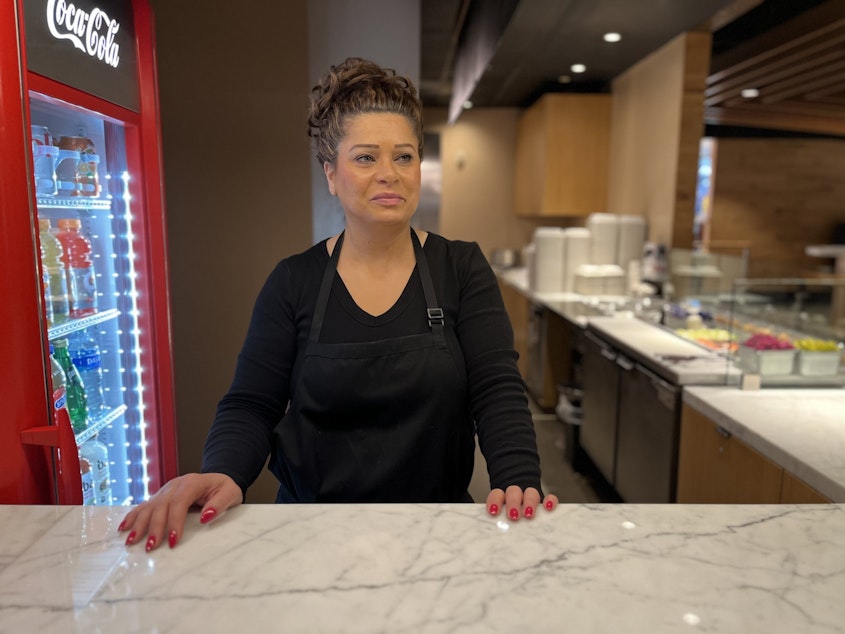How are tech layoffs impacting downtown businesses?

Behind the scenes as we report on the downtown economy
Reporter's Notebook, January 26, 2023
Wednesday was my "spot duty day," when I cover something in a short format story for KUOW's newscasts.
With all the news about tech companies laying off employees, I wanted to see if that’s having an impact on local businesses. I visited the food court in Century Square, where Twitter used to have its Seattle offices.
But the impact, business owners there told me, was less significant than I expected.
“That didn’t affect me at all,” said Leyla Farange, who owns Gyros Place.
Sponsored
The reason, she told me, is that those Twitter engineers were hardly ever in the office anyway. So for a long time, they have not been coming downstairs to get lunch.
But these restaurants are hurting, and badly, she told me, because of a much bigger change in the economy of downtown Seattle: Remote work and high food prices.
Every morning, Farange starts preparing food for the day. There’s lettuce, which used to be $25 to $30 a box, but now is between $75 and $100 (if she can even find it). Meat is twice as much as it was prepandemic.
She does this prep work Monday through Friday.
“And with not everybody coming to work every day, you don’t know how to prepare for that day," Farange said. "I don’t know who’s coming to work or not. So there is lots of waste.”
Sponsored
On days when office workers don’t show up — maybe it’s a Monday after a holiday, maybe the weather’s bad and people didn’t feel like commuting — Farange has to throw out much of that food.
“I’m just surviving,” Farange said.
Other restaurant owners told me similar things.
I asked why they didn't shift to serving downtown residents. Turns out downtown residents mostly eat in their homes, especially at lunch. And at Century Square, the building isn't set up to accommodate dinner service in its food court, because members of the general public can't enter the building after 5 p.m.
Placer AI tracks some statistics in places like downtown Seattle. Foot traffic is about 66% of what it was prepandemic, at least in the chain stores the company tracks. Things are looking brighter for other kinds of stores.
Sponsored
Tourism is in a winter lull right now, but last spring and summer it was 80% to 90% of prepandemic levels. So, stores that cater to tourism can look forward to a busy summer.
And the number of people living downtown is fairly steady. That’s one reason stores that supply home goods, such as Nest Bedding, are doing alright (not great, but not horribly). They’re part of a larger group of businesses just south of Belltown, that sell home furnishings.
I’m currently working on a feature story that looks into how the number of residences in downtowns like Seattle can play a big role in economic recovery, and what people are trying to do to increase the percentage of residential versus office.




